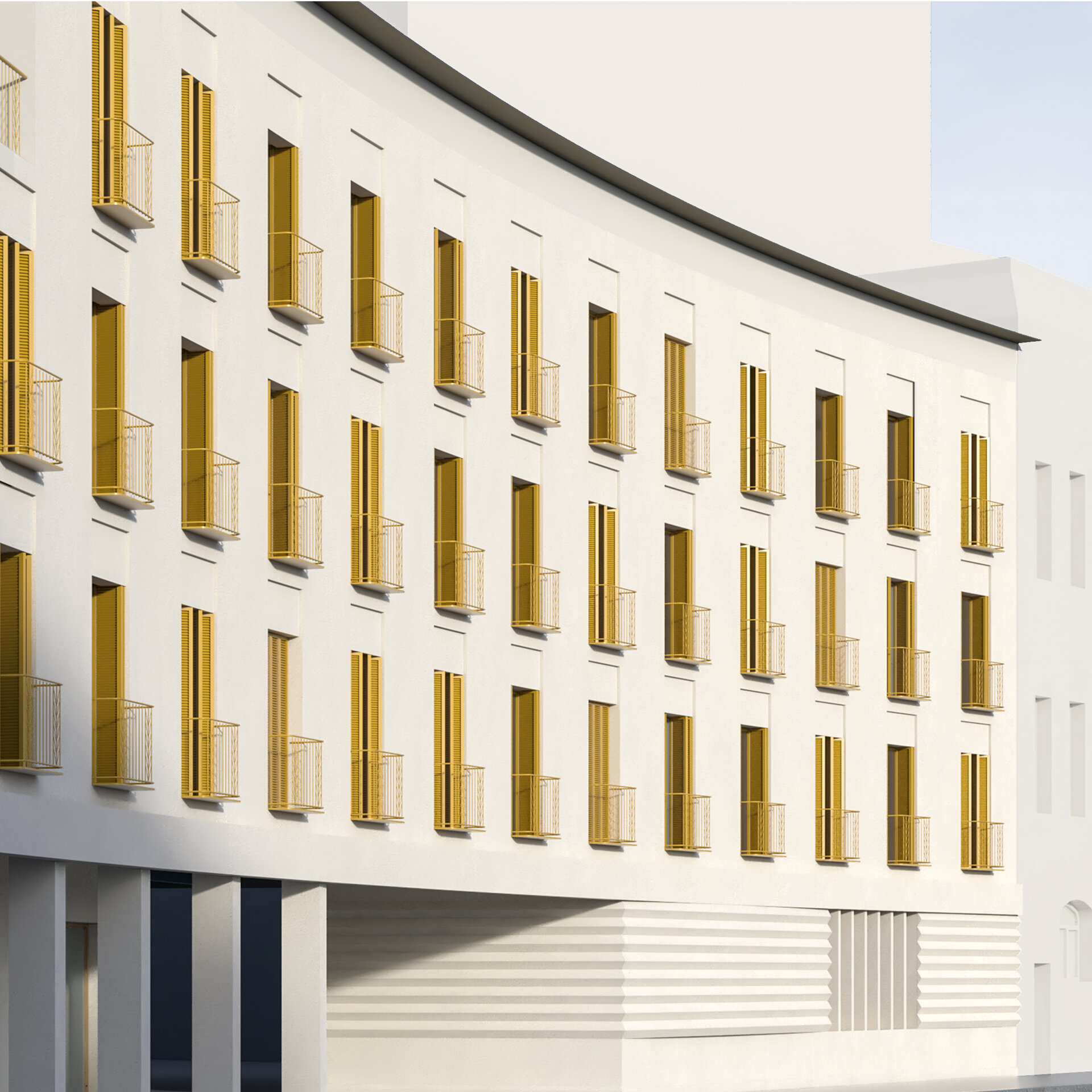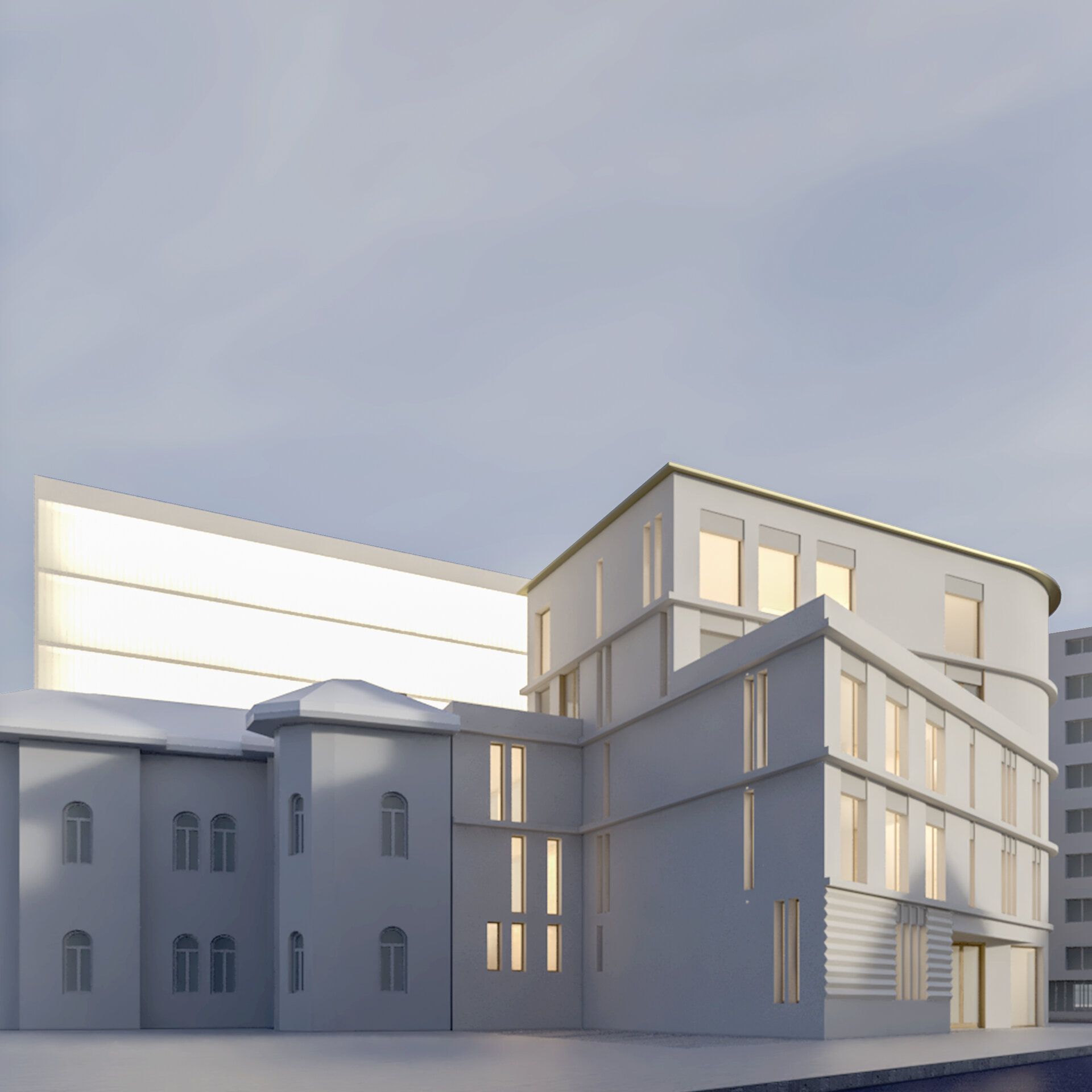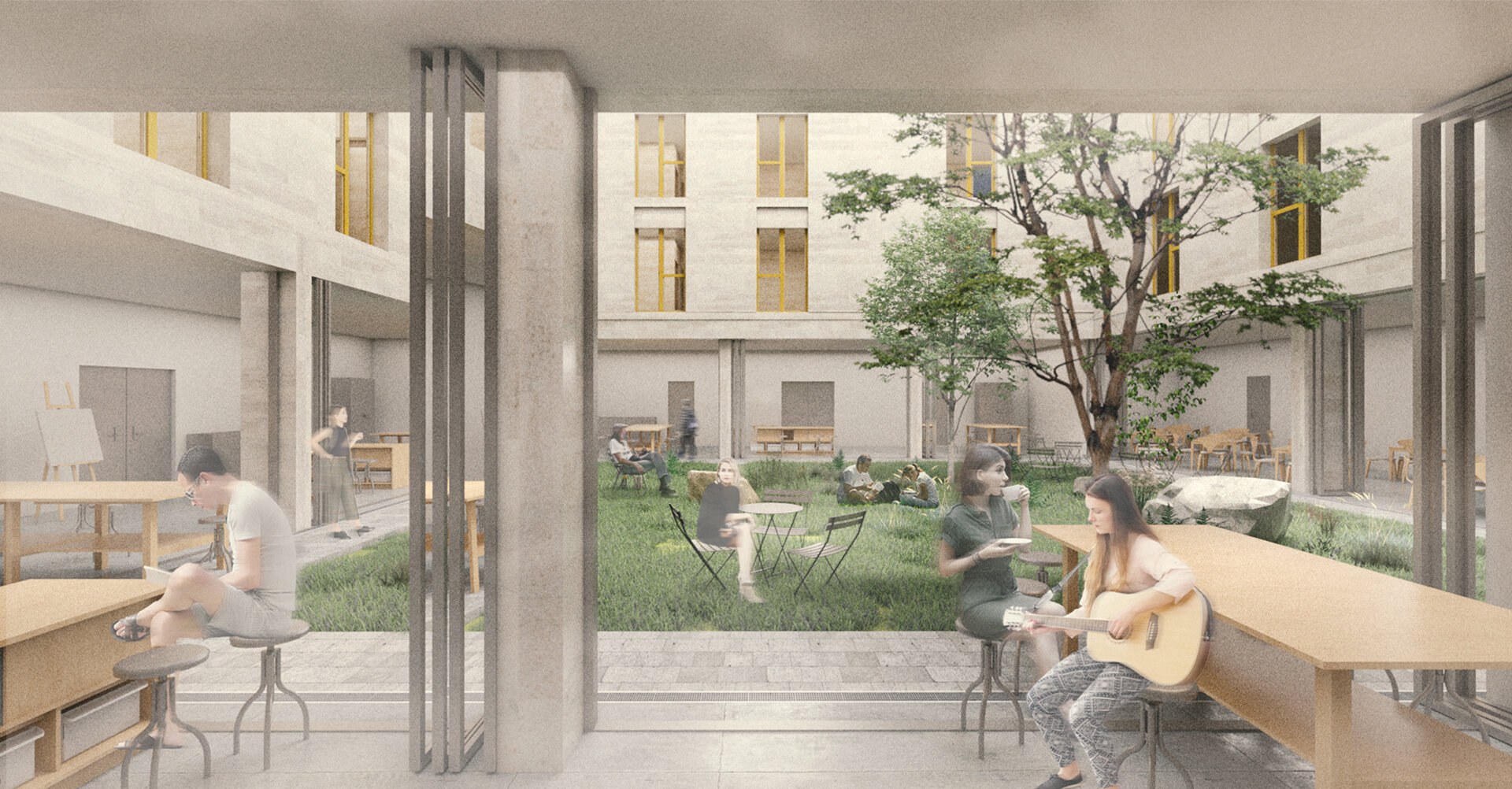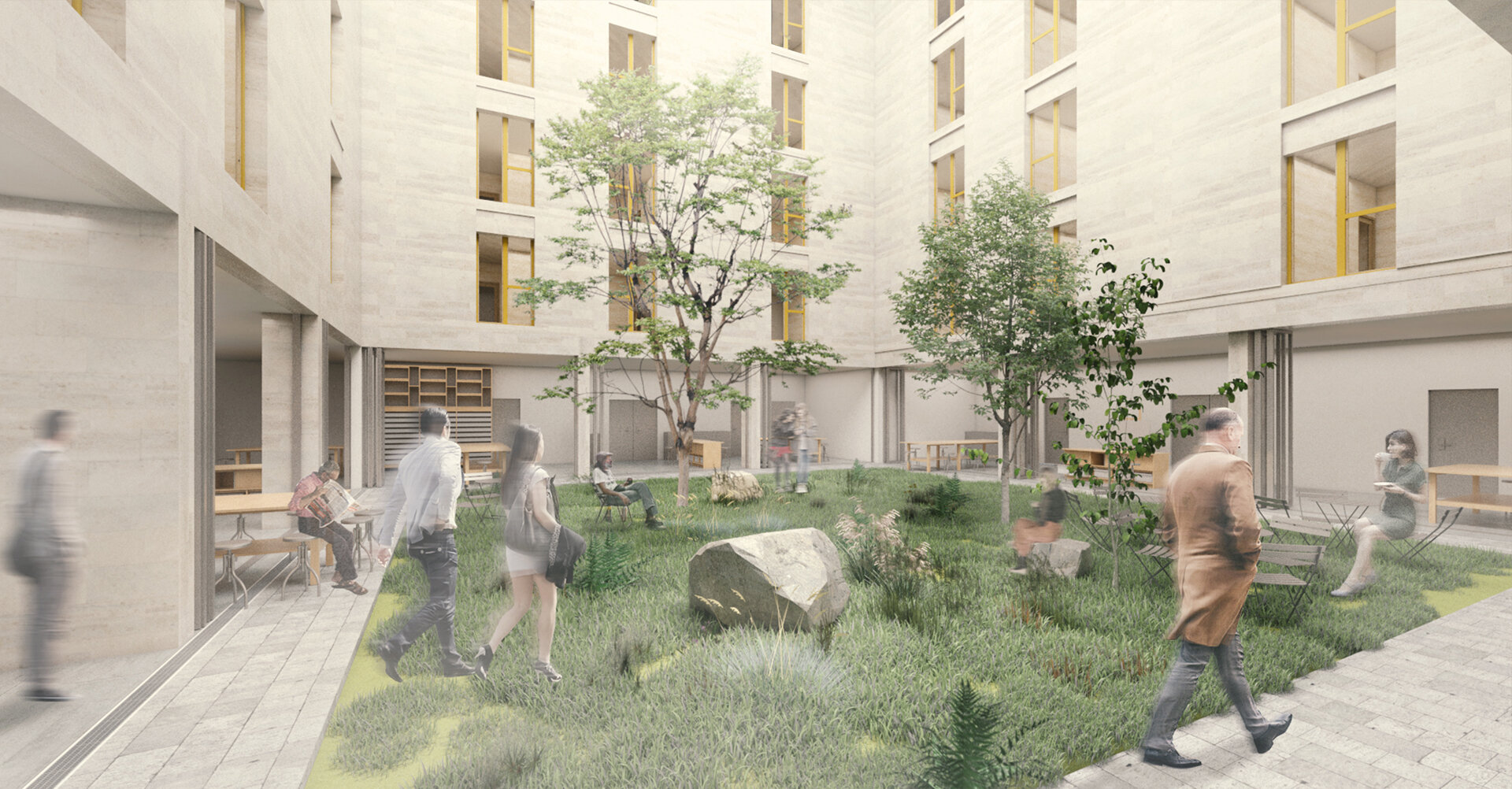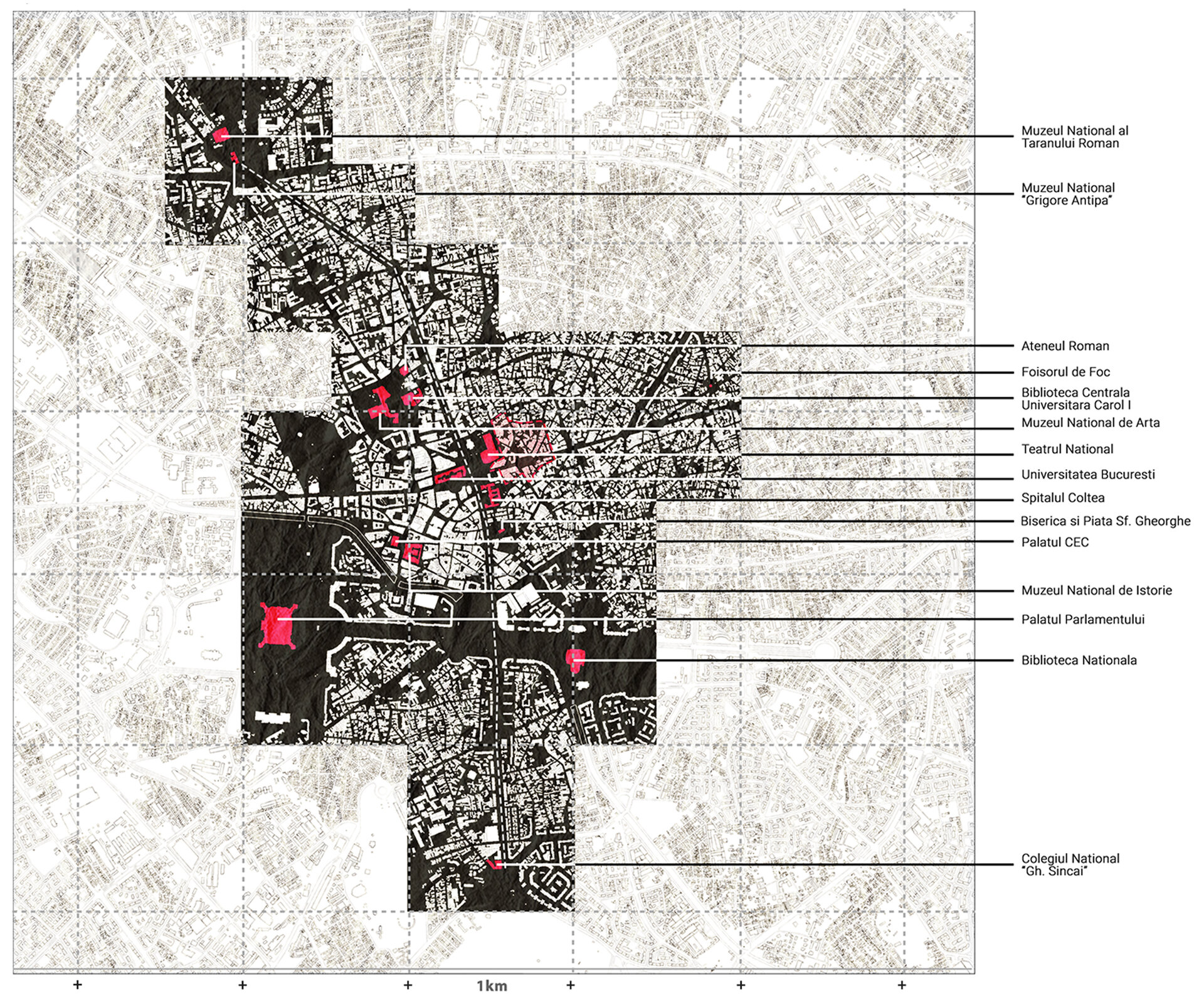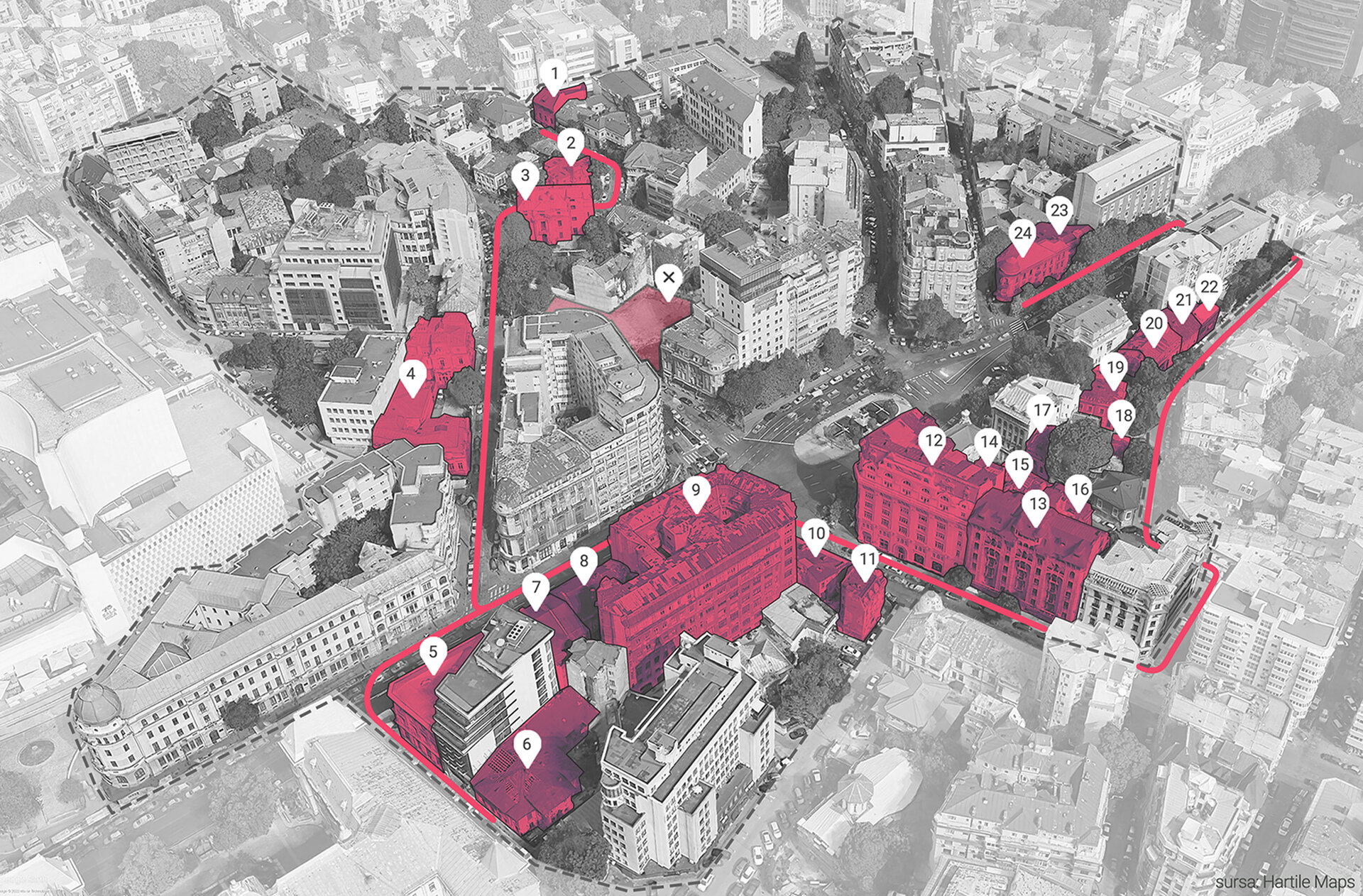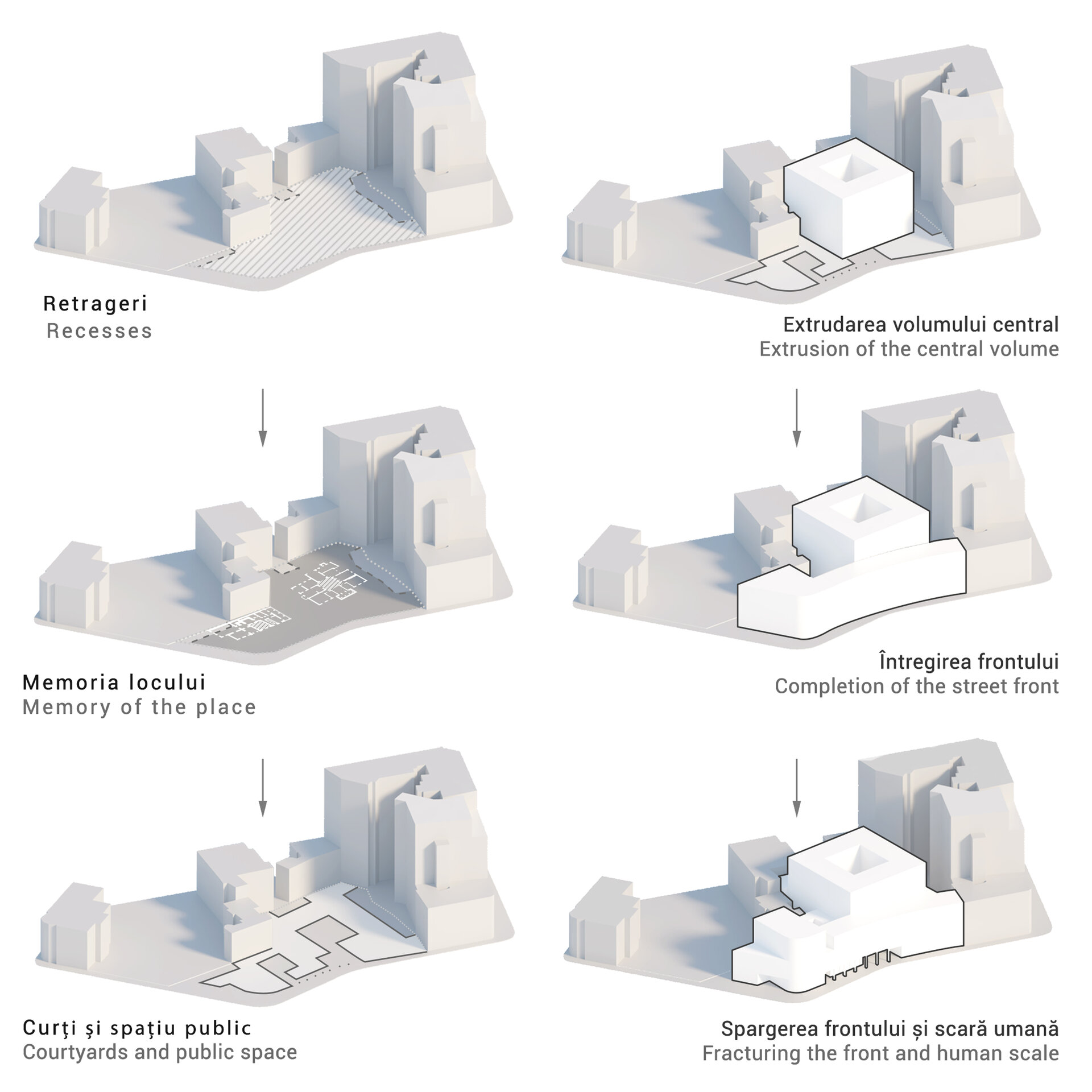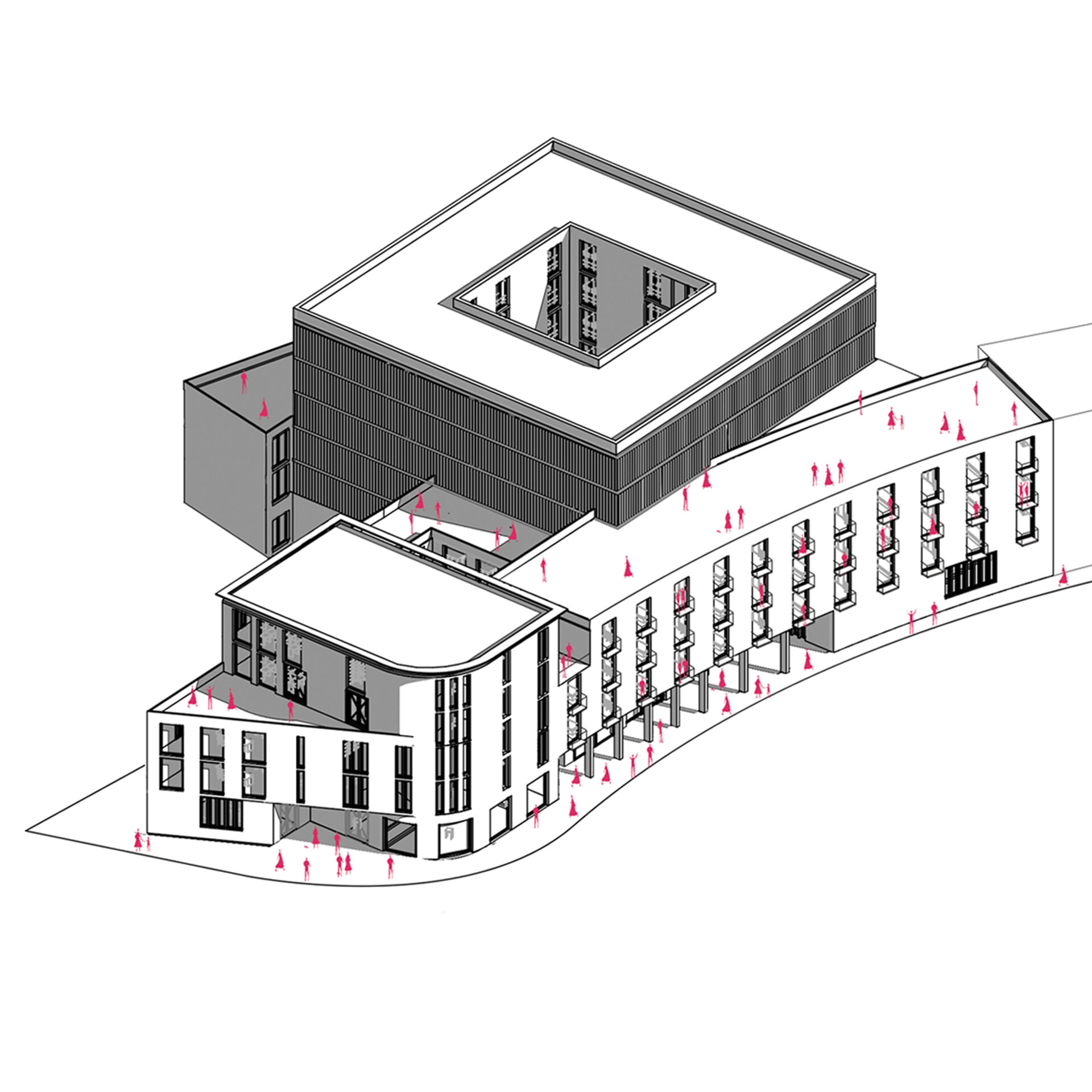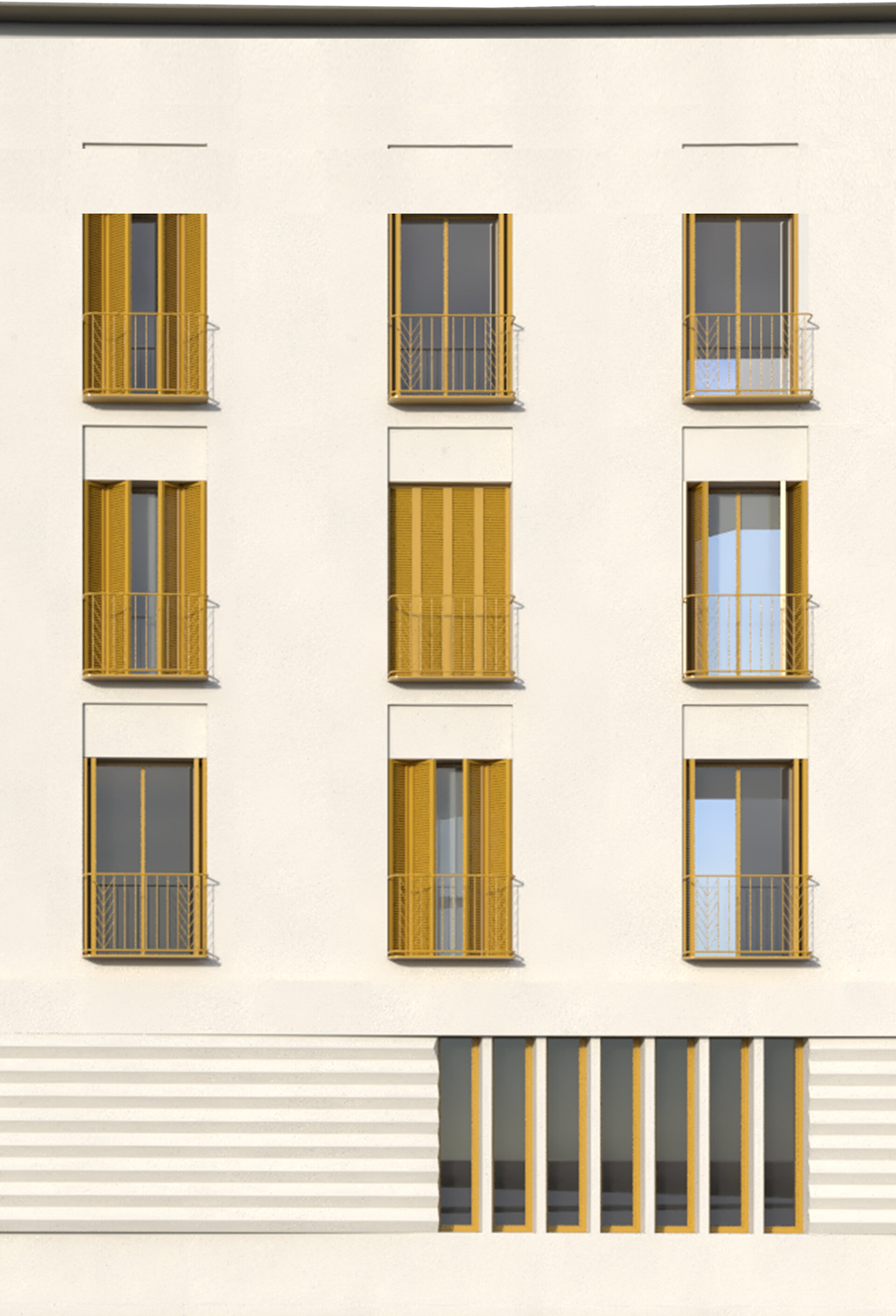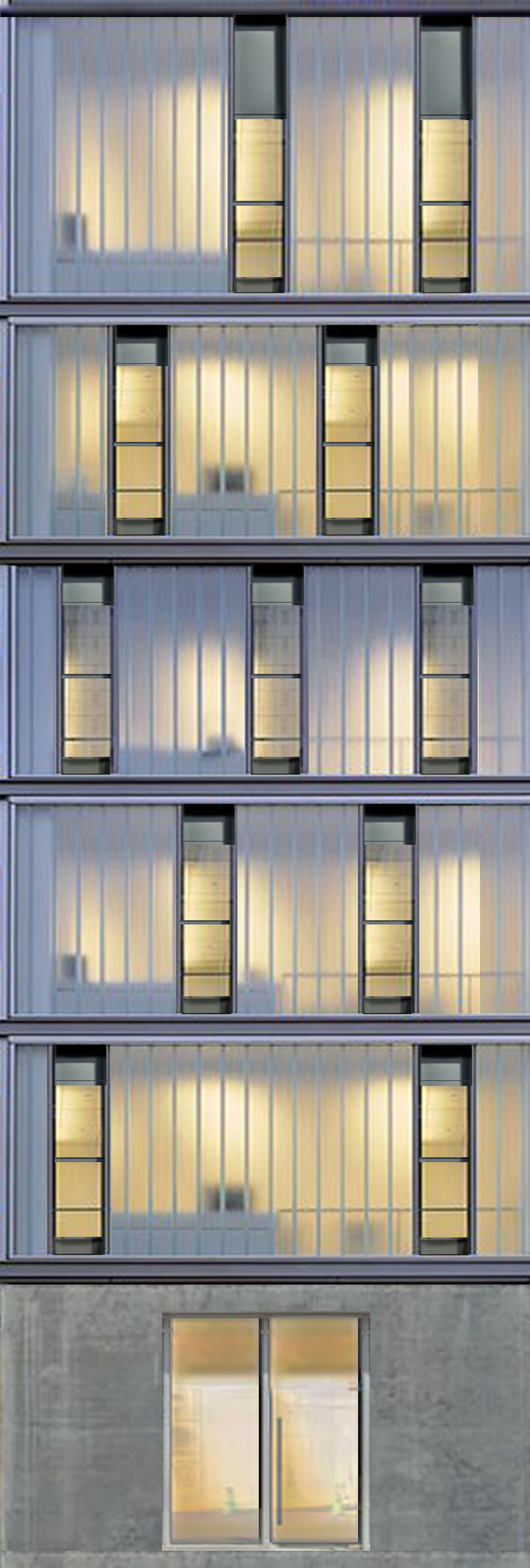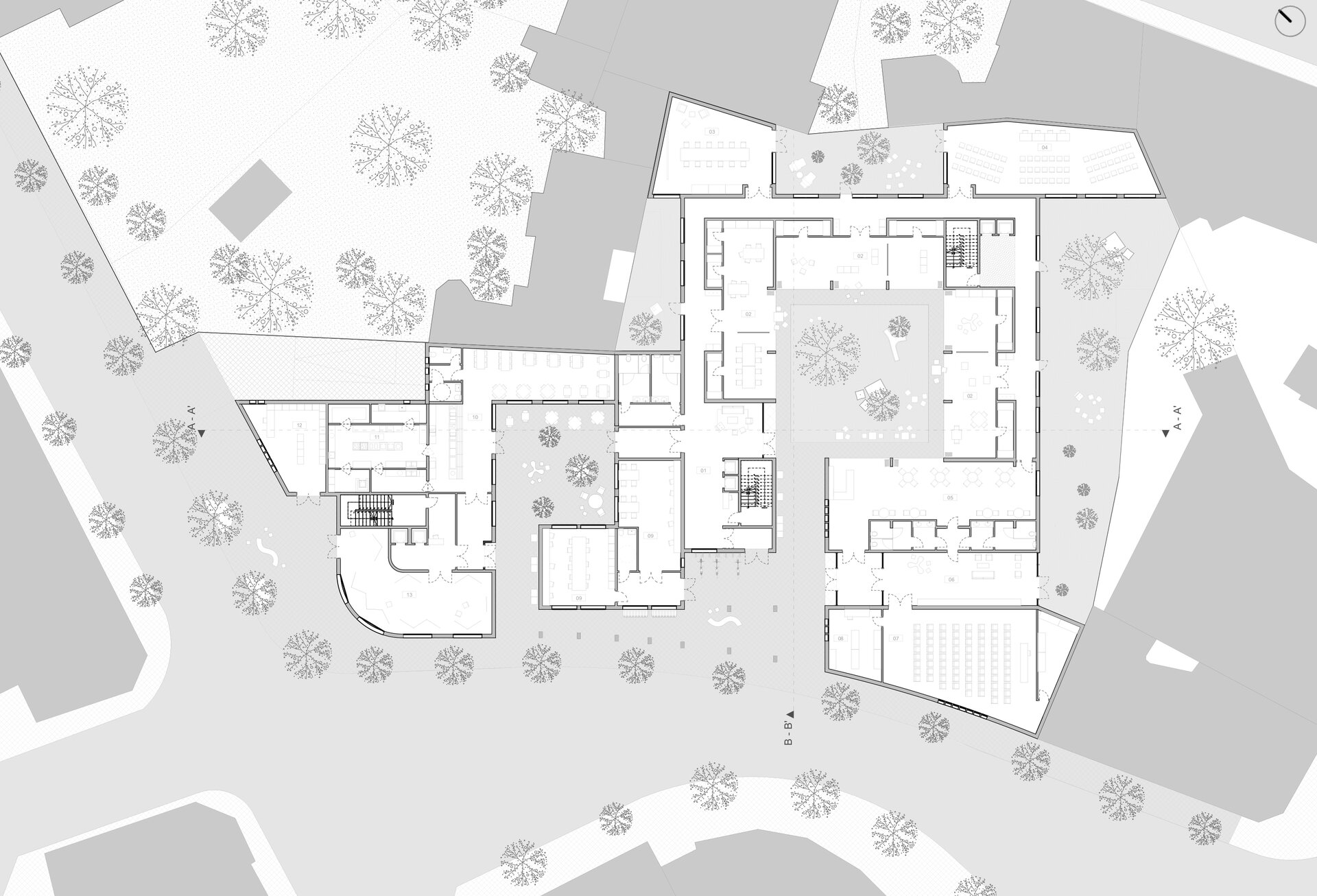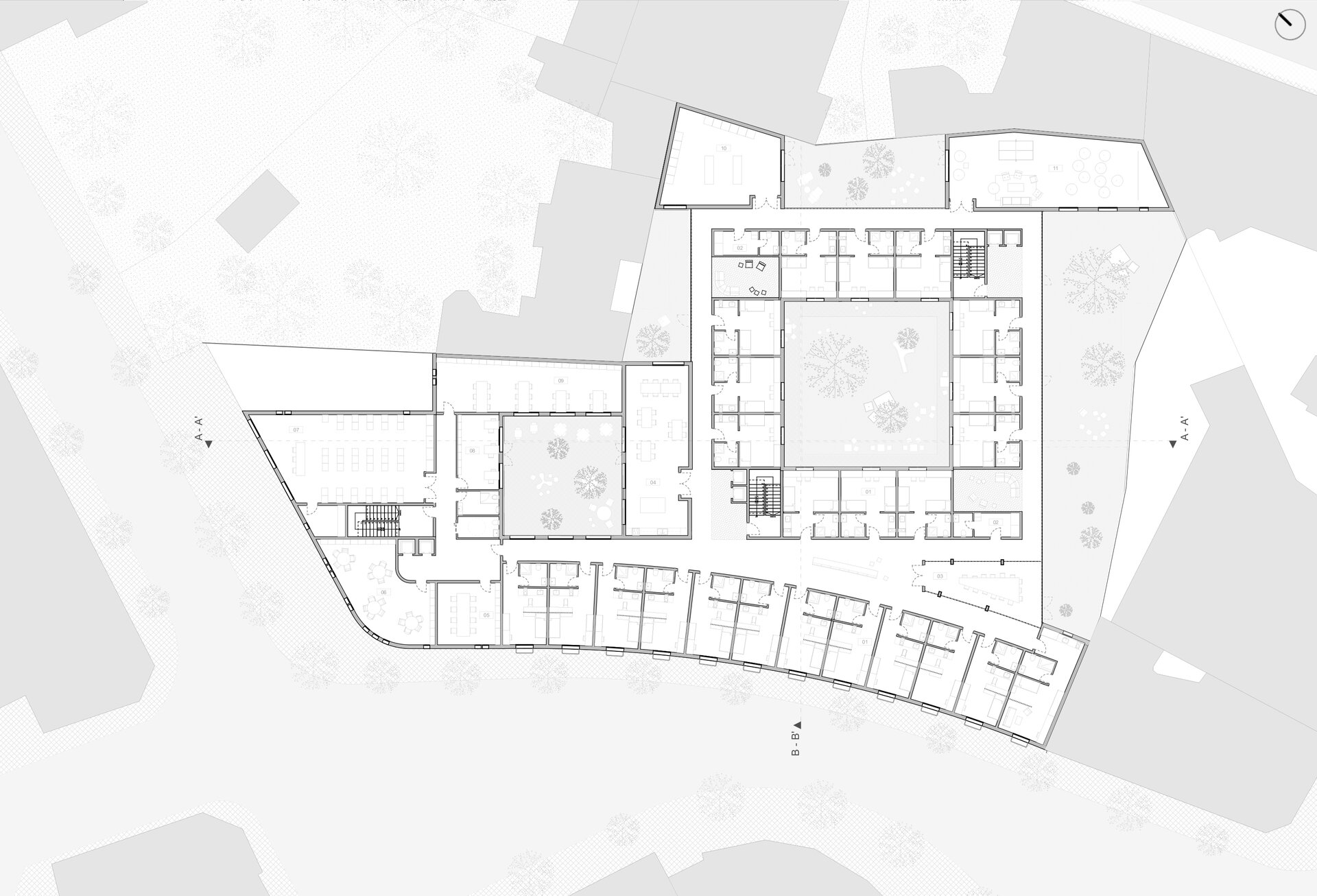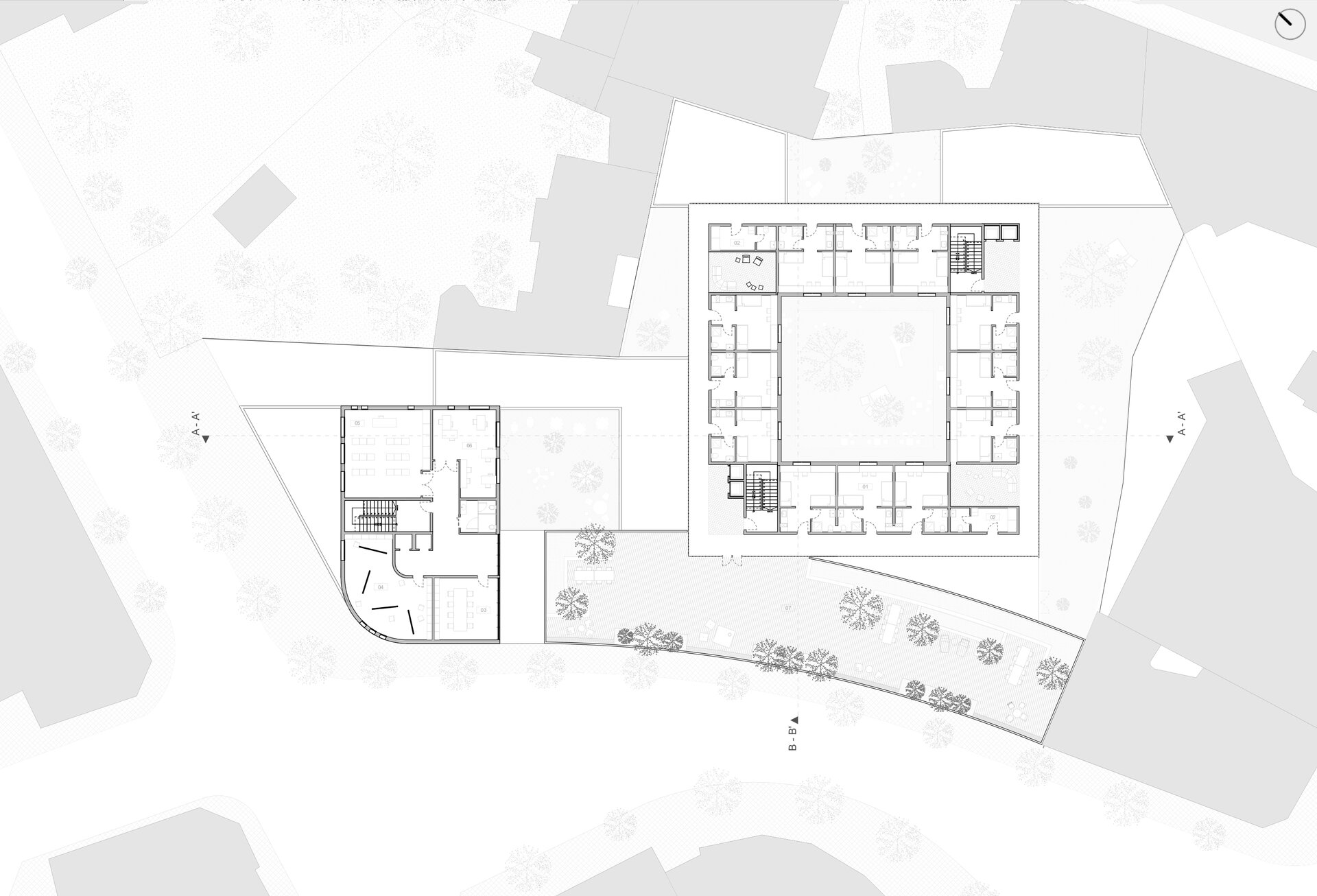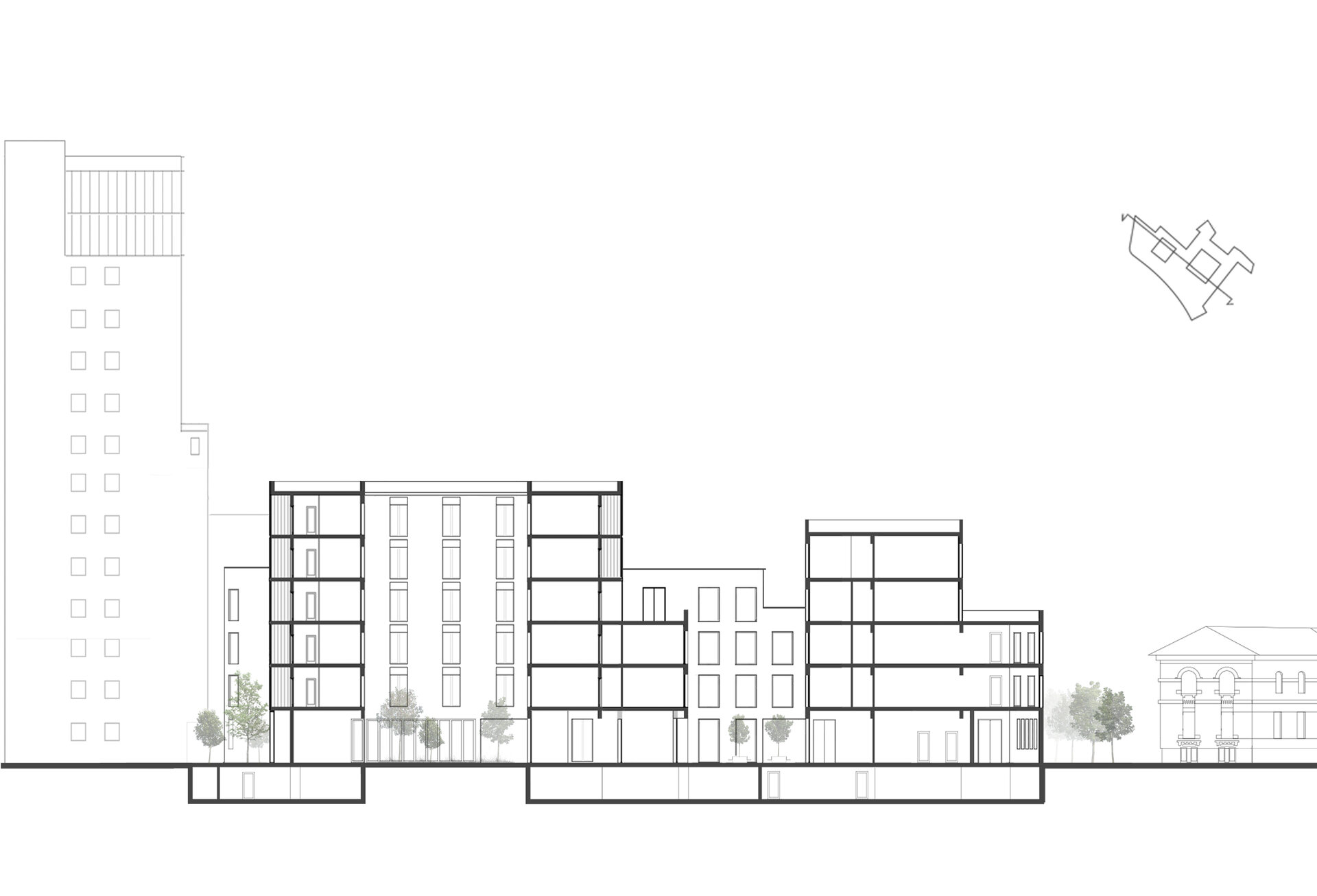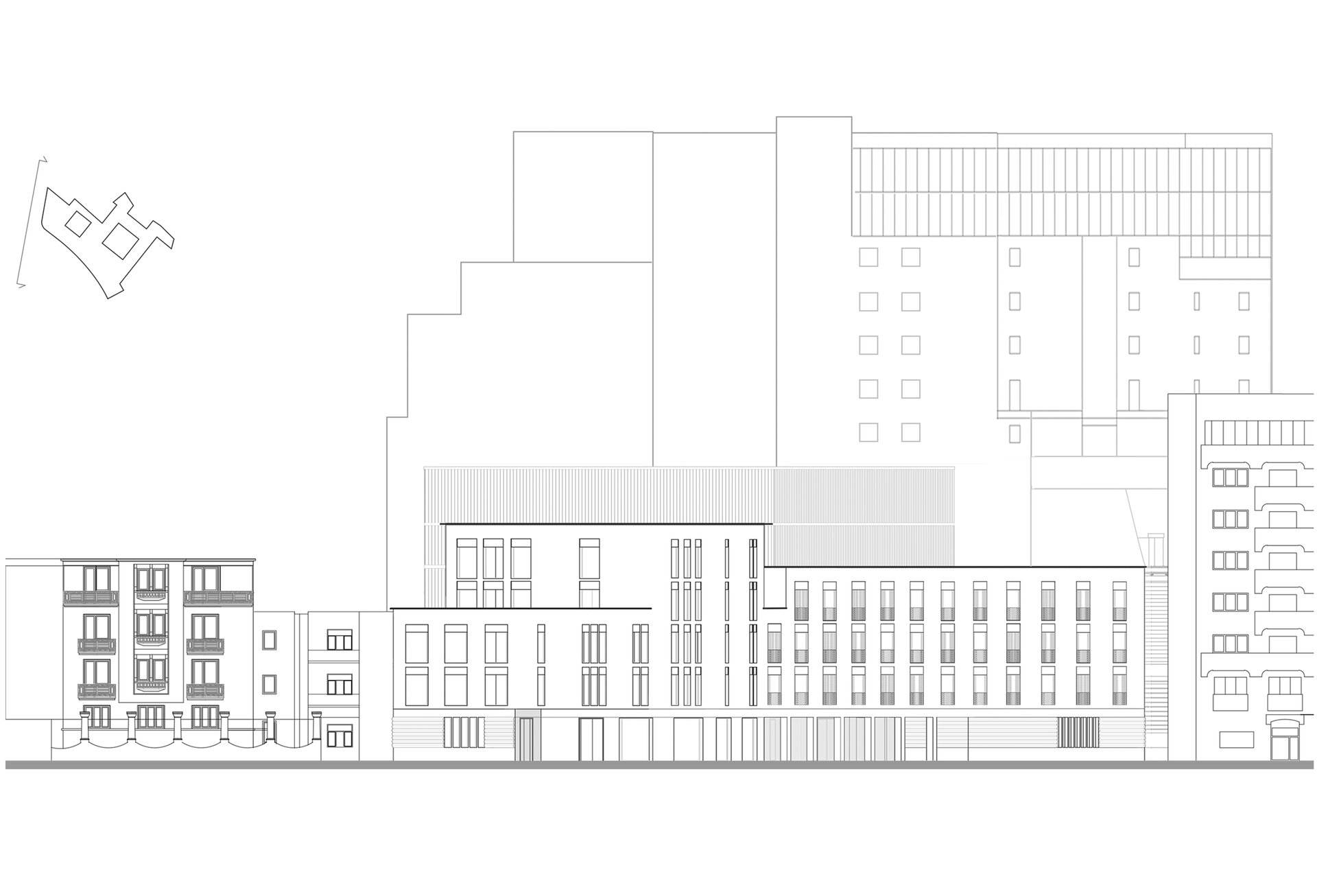
Student housing and public functions in a central protected area of Bucharest
Authors’ Comment
On Tudor Arghezi street, in the central area of Bucharest, we find a site surrounded by the rich history, in a protected historical area that represents the essence of the architectural approach. The proposal comes in response to a need observed in the whole city, there is a significant shortage of accommodation compared to the very large number of students. The intervention will take over the role of mediator between the public space and the private space, but also between the Haussmannian type fabric and the traditional diffuse one.
The main approach refers to two former buildings that existed on the site, built between 1860 and 1870 they were demolished in 2010, the southern one being a kindergarten. Thus, the central spaces that organized the former buildings become part of the composition by introducing two ordering courtyards. These courtyards add a well-needed public space to the area, encouraging a dialogue between people and the city, thanks to the two gangways. The accommodations spaces are oriented toward the bigger courtyard and the street, while complementary spaces are facing the smaller courtyards. The ground floor dissolves in the direction of the street, meeting the visitors with a portico that leads to the core of the building, a courtyard that communicates with flexible rooms, and a cafe. These spaces can be adapted by divining and opening following the needs of the users.
The proposed building wishes to integrate students from different fields, in order to become a landmark for the academic public but also to fulfill the need of belonging to a community and to the city itself. Therefore, the hybrid function blends the public program with the residential one, an answer in accordance with the characteristic typology of the area.
- Metaconnections
- Emergency center: Reintegration of the railway site C.F.R. Suceava in the contemporary circuit
- Social housing complex and Urban regeneration in the southern neighborhood
- Increasing the quality of life in a block of flats built under socialist administration - case study Soarelui neighborhood, Satu Mare
- Public intervention in the central market of Ploiești
- “Horia Bernea” School of painting
- Pinacoteca of the Anastasia Foundation - Malmaison
- Reintegration of the “Little Trianon” Palace in a contemporary circuit
- C Lab FI-LA-RET Campus-Laboratory of technological research in biomedical engineering
- Padina Mountain Center
- A church, a school, an intergenerational center
- Expo pavilions in Leonida Garden
- Apartment Building in the Protected Area no. 13, Dacia
- arhi-CULTURE. Cultural tourism in the Cave Ensamble in Buzău's Mountains
- Landscape for dance and the city. The new campus for ”Floria Capsali” School of Choreography - Rahova neighborhood, Bucharest
- Bucharest New Art Museum
- Student housing and public functions in a central protected area of Bucharest
- In between. Intermediate housing on Vaselor street, Bucharest. Vaselor Home Gardens
- Intermediate housing on Iacob Felix Entry
- Multifunctional Municipal Centre in Câmpina
- The Extension of the Folk Art Museum, Constanta
- Intergenerational learning center (eldery day care center & after-school)
- MLab-Development and Technological Transfer Center Assan's Mill
- Housing by the river
- Moara Răsărit, creative industries incubator
- Verdiales Romanian Parish Center, Malaga
- Saint Mary Institute - Library/ Foreign book study center
- Revitalizing Delfinului Food Market. A center for the community
- Antiquarium. Roman Circus of Toledo
- Revitalizing the Drăgășani wine and vine research center
